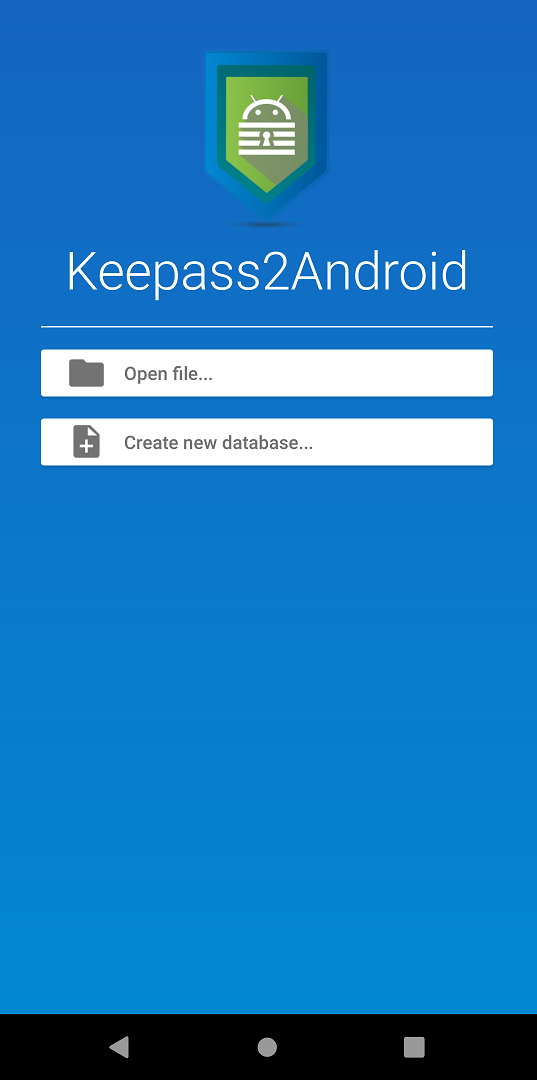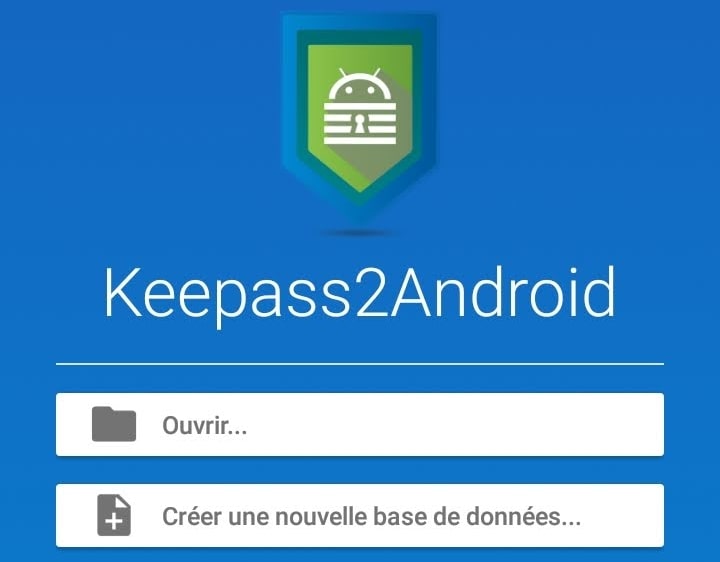

If this sounds still too much for you, choose 4 or more characters in the settings. When using 3 characters and assuming 70 characters in the set of possible characters, the attacker has a 0.0003% chance of opening the file. Second: If you loose your phone and someone tries to open the password database, the attacker has exactly one chance to make use of QuickUnlock. Is this safe? First: it allows you to use a really strong password, this increases safety in case someone gets your database file. * If the wrong QuickUnlock key is entered, the database is locked and the full password is required to re-open. * If you want to re-open your database, you can type just a few characters (by default, the last 3 characters of your password) to unlock quickly and easily! * The application is locked after the time specified in the settings * Load your database and type the strong password once. * Use a strong password for your database Typing such a password on a mobile phone every time you unlock your database is time-consuming and error-prone. random and LONG) password including upper and lower case as well as numbers and special characters. You should protect your password database with a strong (i.e. * directly offer the Copy Username/Password notifications if exactly one entry matches the currently visited URL * go to the screen displaying all entries for the currently visited URL

* bring up a screen to load/unlock a database if no database is loaded and unlocked If you need to lookup a password for a webpage, go to Menu/Share… and select Keepass2Android. Install \”Keepass2Android Offline\” if you don\’t want to grant this privilege. * Access Internet (required for accessing files via FTP/WebDav). * search dialog with all search options from KeePass 2.x. * support for editing entries including additional string fields, file attachments, tags etc. This shields you from clipboard based password sniffers (see below) * Integrated Soft-Keyboard: Switch to this keyboard for entering user credentials.

You can use \”Keepass2Android Offline\” if you don\’t need this feature. * Access files from the cloud or the web (Dropbox, Google Drive, SkyDrive, FTP, WebDAV). * QuickUnlock: Unlock your database once with your full password, re-open it by typing just a few characters (see below) * integrates with nearly every Android browser (see below) The backend uses the original KeePass libraries to handle file access to ensure file format compatibility. The user interface is based on Keepassdroid (by Brian Pellin), ported from Java to Mono for Android. kdbx-files, the database format used by the popular KeePass 2.x Password Safe for Windows and other desktop operating systems. Keepass2Android is an open source password manager application for Android.


 0 kommentar(er)
0 kommentar(er)
